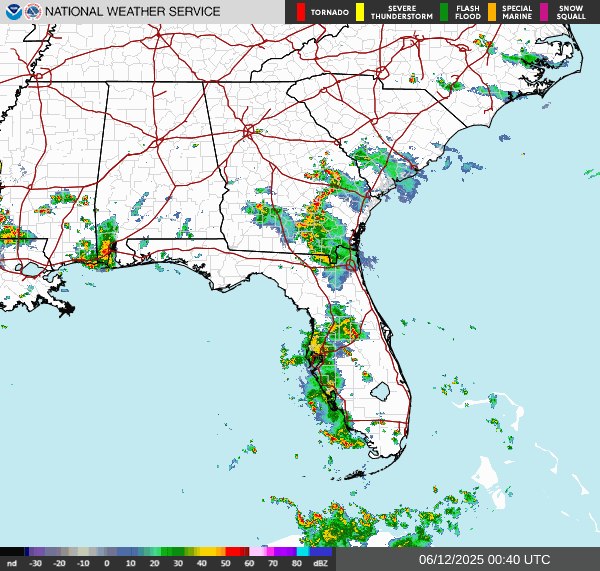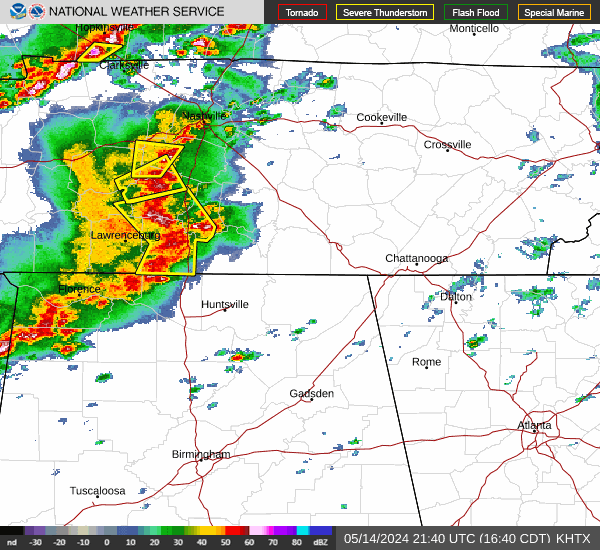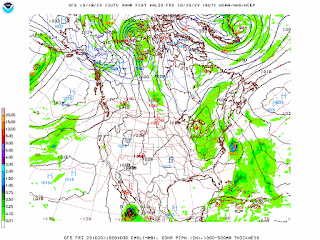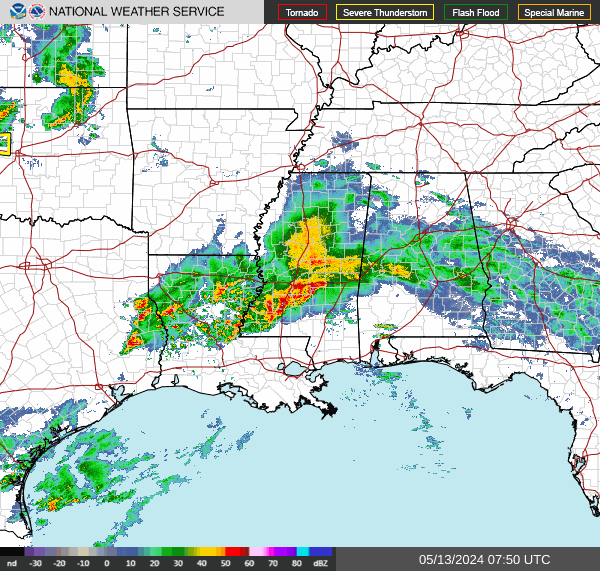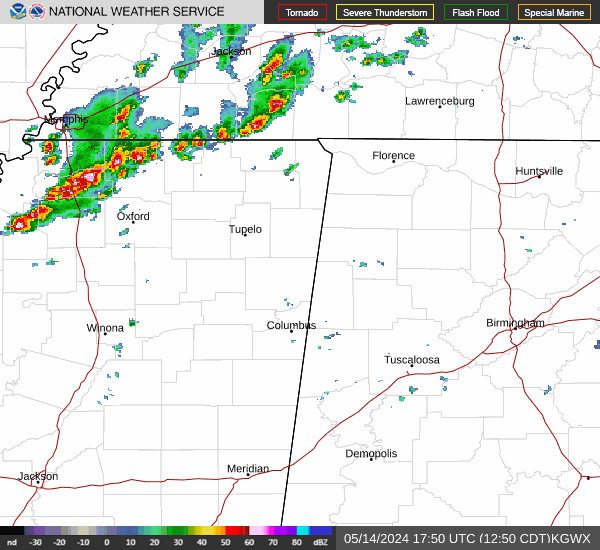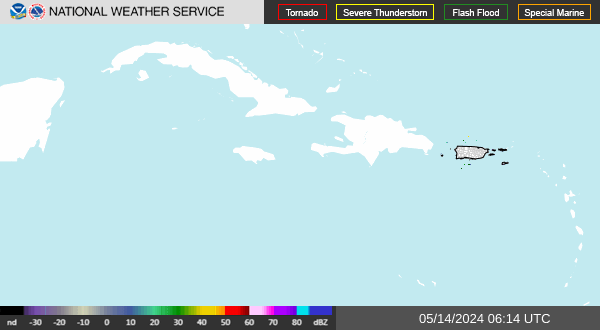North Alabama and Southern Middle Tennessee mainly have severe weather season during the Spring months of March, April, and May.
But we also have a secondary peak in the cool season, usually during the month of November. This is when we are trying to change to Winter. Usually the cold fronts that hit this time of year only bring some rain and gusty winds. But if the air gets warm and muggy enough, sometimes that same wind energy can produce powerful thunderstorms and even tornadoes.
I recently saw where a storm chaser was forced to shelter in one of the worst possible ways in a school. According to this thread, he tried to get himself and others to a bathroom, a much safer place in the building to shelter, and the staff wouldn't let him.
So there is a lot of work left to do reminding people of basic safety during tornadoes and severe thunderstorms.
Let's start with definitions.
A severe thunderstorm is a thunderstorm that produces winds of at least 50 knots (so 58 miles per hour) or hail at least an inch in diameter (about the size of a quarter). These thunderstorms are thought to be an immediate threat to life and property.
For the technical definition of a tornado and the official government guidelines, check out this page. But if you've lived around here any length of time, you know what a tornado is. It does have to be in contact with the ground to be a tornado. If it's up in the air, it is still a funnel cloud. Lots of times around here, you can't see the funnel extending all the way to the ground, but might only see debris coming up from the ground, or dirt being picked up. Unfortunately a lot of our tornadoes, you can't see at all. We have too many hills and trees restricting visibility. And a lot of our tornadoes come from "high-precipitation supercells", which basically means they are wrapped in rain. So if you wait to see or hear it, it'll be too late to get to a safe place by the time you do.
That's why it's extra important to heed warnings in this part of the world, especially at night, but really any time.
The best way to do that is with a NOAA Weather Radio, one with battery backup in case of a power failure. You can get one online or at most stores for about $30. I've had the same one for well over ten years. So the investment is definitely worthwhile. As an alternative or extra layer of awareness, some people might prefer a service like WeatherCall or similar cell phone app. WeatherCall has been around a long time, and I consider it to be reliable.
Don't rely on outdoor warning sirens, as they play a very limited role in letting people know something is going on. If you don't want to use a weather radio or good phone service, you can still enable Wireless Emergency Alerts on your cell phone and/or stay tuned to a reliable radio station that will cut in for severe weather.
A Tornado Watch means that conditions are favorable for the development of severe thunderstorms, that are capable of producing tornadoes, in and close to the watch area. People in those areas need to stay alert for rapidly changing weather conditions, and listen for later statements, or possible warnings.
A Tornado Warning means that a tornado is believed to be developing or already occurring, based on radar data and/or a reliable report, in the warned area. Warnings are usually only issued for a small part of a county at a time now, drawn as a warning polygon on the map. People within that warning polygon should shelter first and gather more information later.
A Severe Thunderstorm Watch means that conditions are favorable for severe thunderstorms to develop, but without tornadoes being likely, more of a threat for damaging straight-line winds and/or large hail. A Severe Thunderstorm Warning means that the storm is believed to be producing damaging winds or hail. Which can still be dangerous.
And if the environment already favors tornadoes, then a tornado could develop before a tornado warning officially comes out. That has happened many times over the years, to the point that if someone is under a tornado watch and a severe thunderstorm warning at the same time, I'd rather know they're already going to a safe place, instead of waiting to see if a tornado warning is required later.
Meteorology has come a long way, but even with dual-polarization radar, the science is not perfect. And a lot of times, I think it's as important for people to use their common sense and trust their instincts as to stay tuned to a good source of weather information. In some of the tornado outbreaks in the distant past, when most weather information was by word-of-mouth, people might camp out at each other's storm cellars for an hour or more, watching the sky and noticing how the air was changing. While they listened to the radio too for any updates.
Most people these days do not have a storm shelter or basement. Which are the best protection against severe thunderstorms or tornadoes. So we do the best we can sheltering on the ground floor. Nine times out of ten, people will survive by sheltering properly on the ground floor, without getting underground.
Now you do have to get out of a mobile home if a tornado is approaching. If you live in a trailer or another very weak structure, you might want to look into public storm shelters. Or if you have a friend of family member with a site-built home, properly anchored to the ground, then you might find that friendlier, to be able to bring pets and be around people you can share some good times with. Most public shelters do not allow pets, but the people usually are friendly. If you live in Tennessee in a mobile home, then I definitely advise you to set something up with a friend or family member ahead of time, to stay in a sturdy house during a severe weather event. Because there are not many shelters in Tennessee compared to in Alabama. Probably because they only got grazed by the 2011 outbreak while Alabama got slammed.
If you want to call your county's Emergency Management Agency to ask about public shelters, then please try to do it before a severe weather event gets underway, at a time the weather is calm, and they are not busy. Here is the directory for Alabama and for Tennessee.
And it's important to familiarize yourself with where you are on a map, what county you live in, and what counties border you. That is very easy to look up now with the internet.
Assuming you have a sturdy house or other strong building to shelter in (not a small point, lots of people, even people with decent jobs, cannot afford to buy a house, so many manufactured homes in this part of the world), the guidelines are:
* Stay away from windows, and don't waste time opening them like people did in the old days.
* Get to the lowest floor, where any winds will be lowest.
* Get into a small room, such as a bathroom, closet, or hallway - where the walls are less likely to collapse under the winds, even tornado winds.
* Make that safe space as near the center of the building as you can - as many walls between you and the storm outside as possible.
* If you have time, shield your body in some way from falling or flying debris. Especially protect your head. A lot of deaths from tornadoes come from head and neck injuries.
And if you do that, you are very likely to survive, and actually are pretty likely to survive without any serious injury.
If you do have the option to get into an actual storm shelter before a tornado hits, then of course you should use that. But the odds are in your favor sheltering above-ground in a well-built house. The last place you ever want to shelter is in a mobile home. Usually you'll have a better chance of surviving lying in a low spot outside, such as an unflooded culvert or ditch, than if you stayed in a mobile home.
Another place you don't want to get stuck, if you can do anything about it, is in a car. There is an old myth about getting up under a bridge, and there are some people (especially storm chasers) now who say they'd maybe take their chances staying inside a car. But my personal opinion is that if a tornado is coming at you, your chances are much better if you abandon the vehicle and lie flat in the lowest spot you can find, covering your head the best you can. In a cold-season outbreak in 2008, I remember a story of a truck driver who survived by abandoning his truck and hanging onto a tree while an E/F-4 tornado sideswiped the house he had hoped to be able to shelter in. He pulled over and tried to get the people up to let him in the house, but he had waited until the tornado was too close. His truck was thrown and severely damaged some distance away, and even though all he did was hold on to a tree as a last resort, split-second decision, he survived with only minor injuries. And I remember another story of a couple who survived the 2011 E/F-5 that ravaged Hackleburg and Phil Campbell by leaving a trailer and getting into a ditch before the storm hit. Of course this is a last-resort situation, but if you're ever in that situation, I would favor sheltering down at ground level instead of staying in a vehicle. I guess it is a personal judgement call, because some meteorologists and storm chasers have told me they would stay in the vehicle and hope for the best. But in most circumstances, with a tornado coming, I would strongly favor leaving the vehicle, if I was down to a last resort choice like that. The only time I think I would stay in the vehicle is if there was flooding going on.
Really the best thing to do, and here I have to salute Tim Troutman from the National Weather Service, is to work out at least three or four places in your mind where you could take shelter, along any route you drive regularly. That can be as simple as a gas station or small restaurant where you could get inside, away from glass. Planning ahead can help you out a lot.
Some extra precautions you could take in a site-built house are to wear a safety helmet, like you would for riding a bike or playing football. If you don't have that, then a pillow or some blankets may offer good-enough protection. Or if you remember tornado drills in school, sometimes they'd get you to put a book on your head. Sometimes people's lives have been saved by simple measures to protect the body from falling or flying debris, especially if it stops someone from getting a head injury.
Another thing to consider is that a lot of our tornadoes happen at night, and if you can remember to, try to have shoes on when you go to your shelter, and your strongest pair of shoes or boots. Because after a tornado, there will likely be broken glass and other debris. If you've been in a car wreck before, you know how you go into a weird state of shock, where things don't quite feel real? People do that after a tornado too. And they can step on sharp objects while only wearing socks or a pair of slippers and get cut up. So it may seem like a small point, but if you can, try to wear your strongest pair of shoes or boots with harder soles ahead of time, since that can reduce a risk of injury. And if you have supplies in your house like an air horn or whistle, can take that to your safe place so that if you are trapped by debris after a tornado, you can make a sound that lets emergency workers know where to look for you. Sometimes they do have to dig people out from under some rubble. Not trying to make this extra-scary, but it does happen sometimes, and it's best to prepare for that if you can. A flashlight can also come in handy, even if you do not take a direct hit from a tornado, since the power might go out. If you are someone who really likes to prepare bigtime, you might keep things like a first-aid kits and some snacks or bottled water in your shelter room, and make sure anybody who takes medicine every day has their medicines with them. In my case, sometimes I take a can of sardines to the closet, which makes a nice reward for my cat staying in a confined space, and also a nice snack for me. I've got one of those wind-up flashlights with a radio and weather band on it.
Hopefully you never need a lot of these extra precautions. The basic idea is to be in a sturdy house or other strong building, and to get as low down as you can, and as near the center as you can, staying well away from any windows and shielding your body, especially your head.
So what was wrong with that school that Jake, the storm chaser, had to shelter in? The school officials were putting people in an open area with what appeared to be weak roofing. Looks like they were on the ground floor, so they got that part right. And they had the right general idea with getting people to crouch down and cover their heads. But they missed the obvious, that a wide, open room like that is easily damaged or destroyed by a tornado, and that you never want to put people close to windows during a tornado. Sometimes when there is no other damage to a house in a quick, relatively weak tornado, it'll still break one or two of the windows out. And I can remember cases where people were injured or killed simply because they were beside a window that blew out. So these basic, simple things can make a huge difference when it comes to safety. The storm chaser had the right idea in wanting to get everyone into a nearby bathroom without any windows in it. Fortunately the tornado did not hit the school building. Nobody was hurt.
But sometimes the tornado does hit the building where people are. And when that happens, we want them in the safest place they can be. Most people are sheltering in a house or at a friend or family member's house. And in there, all of us who care about severe weather safety hope they are in the lowest, most central part of that house, body shielded from any debris, the best that is within their means.
So I hope this write-up helps you develop your own severe weather safety plan. Usually if you just keep the basic ideas in mind and are aware that a severe thunderstorm or tornado is coming, then you'll be fine.
Programming a weather radio is not as daunting as it first appears. Here is an excellent video from Taylor Sarallo in case any of you get a headache about it like I did the first time I bought a digital weather radio. Which was different from the really old one my great-grandmother had. I like the Midland models, but shop around if you like, and find whichever one suits you best. There are some where you can program out certain alerts you don't want to get.
About the WEA on cell phones, they usually don't alert you for Severe Thunderstorm Warnings unless the storm looks particularly dangerous. Any time you hear or see the term Particularly Dangerous Situation attached to a watch or a warning, that is what it sounds like. They don't have specific criteria for that, just a judgement call a forecaster can make to let people know that the weather is extra-dangerous. In the hope that people who weren't paying attention before will start paying attention and take the situation seriously.
The time to prepare for severe weather is a time like right now, when the weather is still calm. That way you can have peace of mind when the weather gets threatening. You already have your plans in place. One thing I've heard a lot lately is, don't let the fact that you can't make a perfect plan, get in the way of making a plan that is good-enough. Most tornadoes are survivable even if your access to shelter is less than ideal. And above I gave two examples of people surviving some of the rare, really bad tornadoes by abandoning a mobile home or vehicle to simply take shelter low to the ground outside. The odds are really in your favor. And there is plenty you can do to stack them more in your favor if you plan ahead.
In case anyone has trouble finding good local maps, I'd check out www.geology.com. That's one of those bits of knowledge we've lost with technological advances, where a lot of people no longer bother to find out where they live on a map. And it is quick and easy to learn.
Here is a link to tornado safety info in Spanish, and also the Spanish version of preparedness in general. That was one thing that everybody learned from the April 2011 outbreak, that we could do a better job reaching Hispanics in our region with weather safety information. Hopefully somebody finds this useful. May tweak it later depending on how active a Fall severe weather season we have this year.
